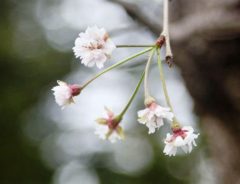Related Article
-

Cherry Blossoms in Autumn: Japan Weather Expert Explains ‘Surprise’ Sight
-

Comfy Space Invaders Goza Mats Will Turn Your Room Into A Gaming Oasis
-

“Ham And Egg” Hamster Capsule Toys Are The Cutest Breakfast Buddies Ever
-

Japanese Twitter celebrates Olympic reporter discovering greatest convenience store ice cream
-

PET Bottles Abolished at Sumitomo Riko in Attempt to Improve Environmental Issues
-

Chef Ivan Orkin Showing How To “Properly” Enjoy A Bowl Of Ramen



Having stood in the open air for over 750 years, the Great Buddha statue of Kamakura has a tale of time written across its face; etched into its bronze cast by weathering and oxidisation.
The large statue cast in 1252, was originally gold plated and once stood in a great temple hall. However, typhoons and tsunamis destroyed the temple buildings multiple times during the 14th and 15th century, and ultimately led to the decision to leave the Great Buddha out in the elements. Standing at a height of 13.35 meters, the statue is the second tallest Buddha statue made of a bronze cast in Japan, beaten in height only by Nara’s Daibutsu (15 meters) housed in Tōdaiji temple. Both statues, however are dwarfed in size and weight, by the reclining Buddha of Nanzō-in-in, which measures 41 meters in length and weighs 300 tons.
The statue is a designated national treasure in Japan and is an earthly representation of the principal buddha known as the Amida Buddha. The bronze statue we see today actually sits on the location of an earlier statue of the Buddha which was constructed in 1243 and made entirely of wood. In 1248, the wooden statue was damaged by a storm and the hall that had covered it was destroyed, which prompted the Buddhist priest Jōkō of Tōtōmi to suggest making a second rendition of the statue, but this time in bronze. It is believed that Jōkō asked for donations from the local villagers to help build the statue. It is speculated that the statue was cast in 1252, either by Ōno Gorōemon or Tanji Hisatomo, who were both well established casters of the period.
After being casted, the bronze statue was housed inside of another hall, which just like the destruction of the previous hall and statue, was damaged by a storm in 1334. Another storm in 1369 destroyed the rebuild, and the final building to house the Great Buddha was washed away by a large Tsunami in 1498. The head monk of the temple had planned to rebuild the hall to house the Buddha, but he died before the project even started. Ever since the destruction of it’s great hall by the 1498 Tsunami, the statue has been standing in the open air. Despite having been left to the cruelty of Mother Nature, the statue still bears the remains of gold leaf on its ears. In 1923, the base that the statue sits on was destroyed by the Great Kanto Earthquake, however it was repaired in 1925. Procedures to strengthen the statue and to protect it from future earthquakes were undertaken in 1960. The latest preservation work on the Buddha commenced in 2016.
The statue is hollow inside and for a small ¥20 fee, visitors to the temple are able to climb inside of the Great Buddha to imagine how it was built from the inside. Looking closely at the inner walls of the statue, one might be able to spot graffiti left by previous visitors to the temple. A sign near the ground entrance, reprimands the graffiti and reads “Stranger, whosoever thou art and whatsoever be thy creed, when thou enterest this sanctuary remember thou treadest upon ground hallowed by the worship of ages. This is the Temple of Buddha and the gate of the eternal, and should therefore be entered with reverence.”
The statue’s bronze cast has turned into a beautiful mix of emerald and golden hues as time has weathered it/Photo Credit: Hawken King CC by 2.0
How to get to Kōtoku-in and the Great Buddha
It is recommended to travel to Kamakura’s Great Buddha and Kōtoku-in temple by train. The sightseeing spot is located a short 5 minute walk from Hase station on the street car type train of the Enoden line. The terminal of the Enoden line is Kamakura station.
Kamakura station can be reached by the Yokosuka line from Tokyo station, which takes about an hour journey for ¥940 yen. Alternatively, both JR Shonan Shinjuku line and Odakyu railway have trains running to the station. The JR Shonan Shinjuku line connects Shinjuku and Kamakura stations directly on trains bound for Zushi and costs ¥940 yen. The Odakyu line offers a round trip ticket from Shinjuku to Kamakura with unlimited use of the Enoden line for ¥1520 yen. To get the round trip and unlimited Enoden line ticket, you will need the Odakyu line Enoshima Kamakura Free Pass.
Entrance to Kōtoku-in and to see the Great Buddha costs ¥300 for Junior high school age and above. For visitors of elementary school age, the entrance is charged at ¥150. To enter the interior of the statue the additional fee of ¥20 must be paid to the guard standing at the base of the statue.
Please note, the temple asks all visitors not to eat or drink in front of the Great Buddha statue. They also ask visitors to refrain from using drones in the temple grounds and from using selfie sticks when inside the statue.